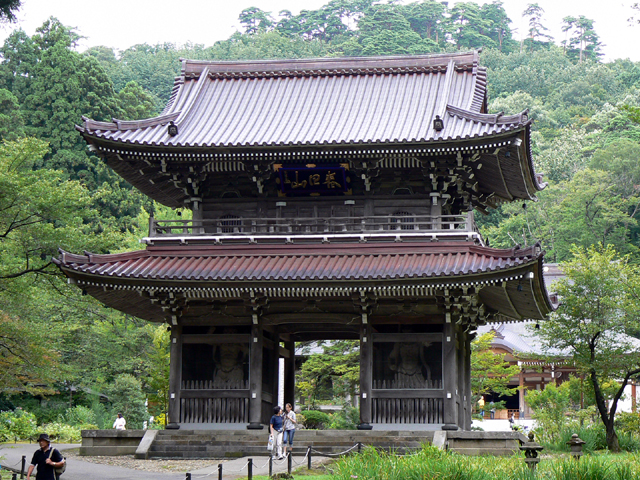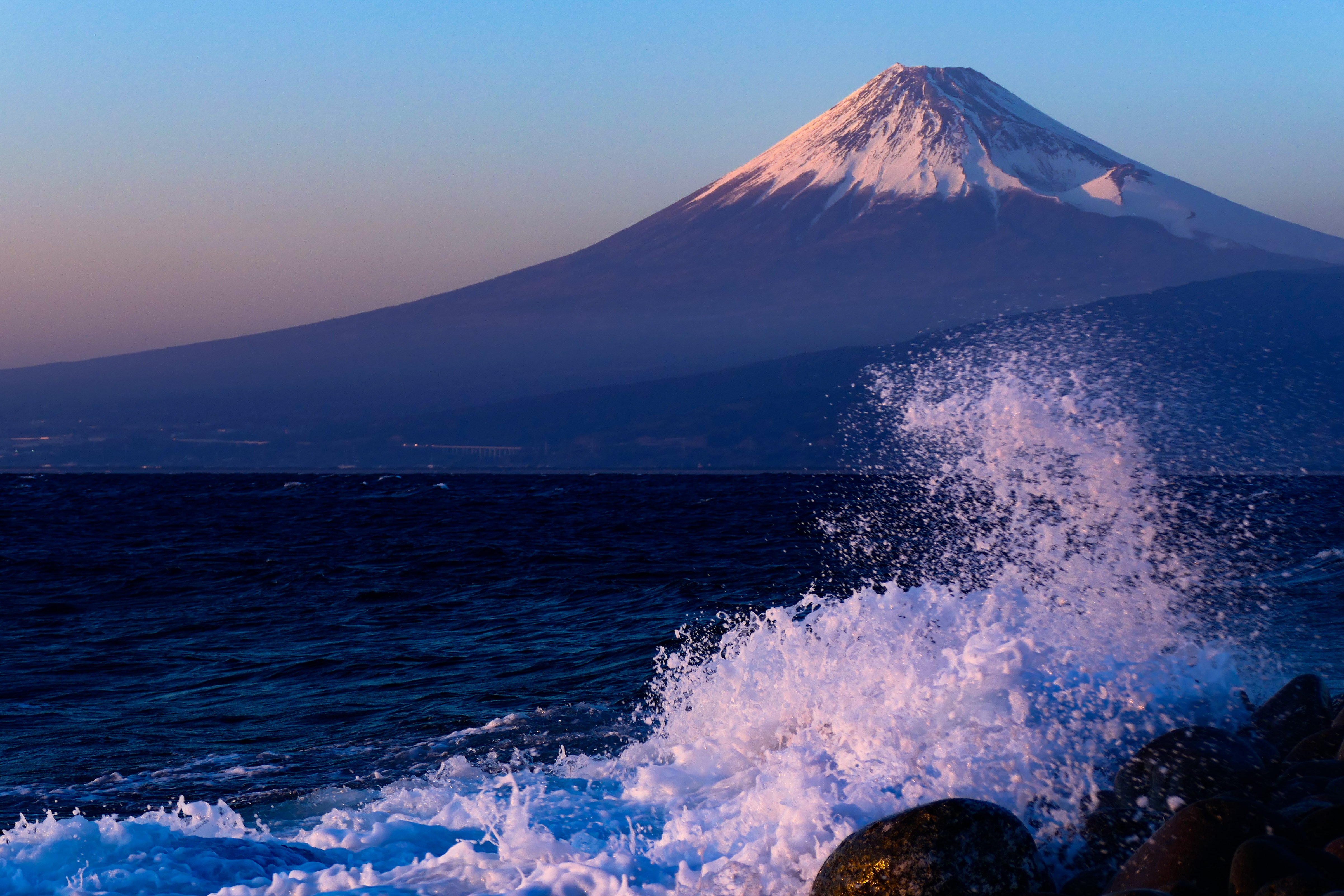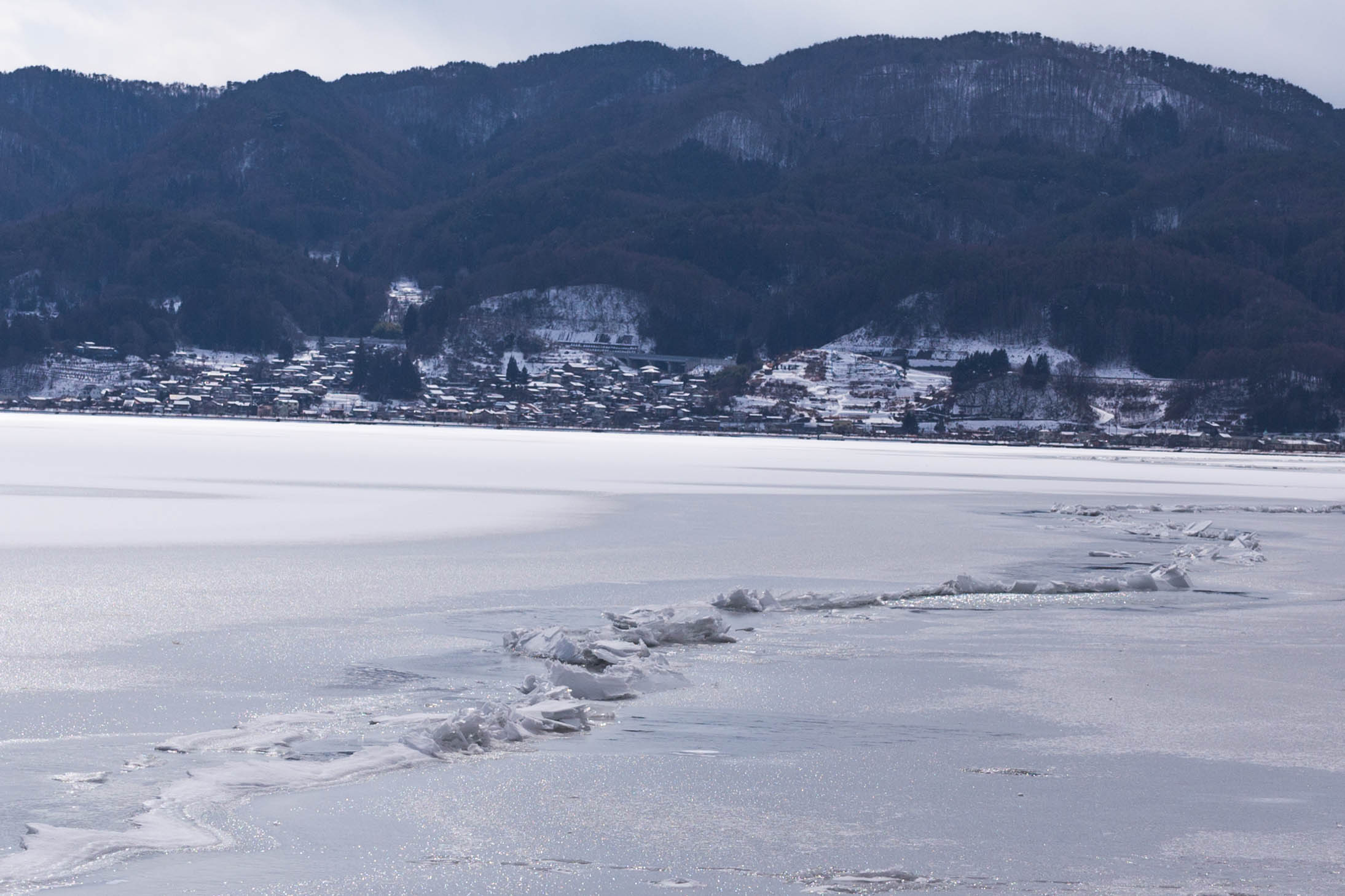|
Itoigawa
is a city located in Niigata Prefecture, Japan. , the city had an estimated population of 41,333, and a population density of 55 persons per km2. The total area of the city is . Geography Itoigawa is located in the far southwestern corner of Niigata Prefecture, bordered by the Sea of Japan to the north, Nagano Prefecture to the south, and Toyama Prefecture to the west. Parts of the city are within the borders of the Chūbu-Sangaku National Park or the Myōkō-Togakushi Renzan National Park. Itoigawa is also famous for its jade which can be found on local beaches. Itoigawa also lends its name to the Itoigawa-Shizuoka Tectonic Line, a major fault that runs from Itoigawa, through Lake Suwa to the city of Shizuoka in Shizuoka Prefecture, forming the western border of the Fossa Magna. Surrounding municipalities *Niigata Prefecture ** Jōetsu ** Myōkō * Nagano Prefecture ** Otari **Hakuba *Toyama Prefecture **Asahi Climate Itoigawa has a Humid climate (Köppen ''Cfa'') chara ... [...More Info...] [...Related Items...] OR: [Wikipedia] [Google] [Baidu] |
Fossa Magna
Fossa Magna is a great rift lowland in Japan. It is often confused with Itoigawa-Shizuoka Tectonic Line. However, Itoigawa-Shizuoka Tectonic Line is a line; Fossa Magna is an area. Fossa Magna is Latin for "great crevasse". This name was given by Heinrich Edmund Naumann. Fossa Magna Museum Fossa Magna Museum is a museum that is located in Itoigawa, Niigata Prefecture. It opened on April 25, 1994. It is part of Itoigawa UNESCO Global Geopark. Itoigawa is located directly above Itoigawa-Shizuoka Tectonic Line , also Ito Shizu Sen (糸静線) is a major fault on Honshu island that runs from the city of Itoigawa, Niigata Prefecture, through Lake Suwa to the city of Shizuoka in Shizuoka Prefecture. It is often confused with the Fossa Magna (Great Fis ... and is a place where you can observe a wide variety of rocks, minerals, geological structures and so on. In addition, There is Fossa Magna Park in Itoigawa. References Landforms of Japan Geology of Japan {{J ... [...More Info...] [...Related Items...] OR: [Wikipedia] [Google] [Baidu] |
Niigata Prefecture
is a Prefectures of Japan, prefecture in the Chūbu region of Honshu of Japan. Niigata Prefecture has a population of 2,227,496 (1 July 2019) and is the List of Japanese prefectures by area, fifth-largest prefecture of Japan by geographic area at . Niigata Prefecture borders Toyama Prefecture and Nagano Prefecture to the southwest, Gunma Prefecture to the south, Fukushima Prefecture to the east, and Yamagata Prefecture to the northeast. Niigata, Niigata, Niigata is the capital and largest city of Niigata Prefecture, with other major cities including Nagaoka, Niigata, Nagaoka, Jōetsu, Niigata, Jōetsu, and Sanjō, Niigata, Sanjō. Niigata Prefecture contains the Niigata Major Metropolitan Area centered on Niigata with a population of 1,395,612, the largest metropolitan area on the Sea of Japan coast and the twelfth-largest in Japan. Niigata Prefecture is part of the historic Hokuriku region and features Sado, Niigata, Sado Island, the sixth largest island of Japan in area follo ... [...More Info...] [...Related Items...] OR: [Wikipedia] [Google] [Baidu] |
Itoigawa-Shizuoka Tectonic Line
, also Ito Shizu Sen (糸静線) is a major fault on Honshu island that runs from the city of Itoigawa, Niigata Prefecture, through Lake Suwa to the city of Shizuoka in Shizuoka Prefecture. It is often confused with the Fossa Magna (Great Fissure Zone), a geological feature it forms the western boundary of. Seismic activity Recent significant earthquakes on this tectonic line include: * M5.4; 30 June 2011; epicentre near Matsumoto, Nagano; 1 death, 17 injuries. * M6.7; 22 November 2014; epicentre near Hakuba, Nagano is a village located in Nagano Prefecture, Japan. , the village had an estimated population of 9,007 in 4267 households, and a population density of 48 persons per km2. The total area of the village is . Hakuba is an internationally renowned s ...; 46 injuries. Japanese-language Wikipedia entry References Geology of Japan Seismic faults of Japan Geography of Niigata Prefecture Geography of Shizuoka Prefecture Geography of Nagano Prefecture { ... [...More Info...] [...Related Items...] OR: [Wikipedia] [Google] [Baidu] |
Jōetsu, Niigata
is a city located in Niigata Prefecture, Japan. , the city had an estimated population of 189,430, in 76,461 households with a population density of 190 persons per km2. The total area of the city was . Jōetsu borders the Sea of Japan and is renowned for its abundance of snow, the annual cherry-blossom festival, ''sake'' and ''Koshihikari'' rice. Geography Jōetsu is in southwest Niigata Prefecture, bordered by the Sea of Japan to the north and Nagano Prefecture to the south. It is approximately 133 kilometers west of the city of Niigata, the prefectural capital and 139 kilometers east of Toyama. Mountains Surrounded by the Japanese Alps, Jōetsu contains four noteworthy mountains: *Kasugayama - formerly the location of Kasugayama Castle, home of the Sengoku period ''daimyō'', Uesugi Kenshin *Kanayasan - birthplace of skiing in Japan *Yoneyama - a sacred mountain on the border of Joetsu and neighboring Kashiwazaki City. *Hishigatake-yama - part of the Shin-etsu tr ... [...More Info...] [...Related Items...] OR: [Wikipedia] [Google] [Baidu] |
Myōkō-Togakushi Renzan National Park
is a national park in Niigata Prefecture and Nagano Prefecture, Japan. Established in 2015, and formerly part of Jōshin'etsu-kōgen National Park, the park comprises an area of in the municipalities of Itoigawa and Myōkō in Niigata Prefecture and Iizuna, Nagano, Otari, and Shinano in Nagano Prefecture. Prominent mountains of the park include Mount Hiuchi (2,462m), Mount Myōkō (2,454m), Niigata-Yake-Yama (2,400m,), Mount Takatsuma (2,353m), Mount Kurohime (2,054m), Mount Iizuna (1,917m), and Mount Togakushi (1,904m). Other features include Lake Nojiri and Lake Reisenji. . File:Kagami-ike Pond, Togakushi.jpg, Kagami-ike Pond, in Togakushi, Nagano 2019. File:戸隠の鏡池 Kagamiike-pond in Togakushi (8146623275).jpg, Kagamiike-pond File:火打山から見た妙高山.jpg, Mount Hiuchi File:Naena Falls 2.jpg, Naena Falls File:Imori-ike with Mout Myoko (7697997840).jpg, Mount Myoko See also * List of national parks of Japan * Chūbu region * Togakushi Shrine * Five ... [...More Info...] [...Related Items...] OR: [Wikipedia] [Google] [Baidu] |
Nagano Prefecture
is a landlocked prefecture of Japan located in the Chūbu region of Honshū. Nagano Prefecture has a population of 2,052,493 () and has a geographic area of . Nagano Prefecture borders Niigata Prefecture to the north, Gunma Prefecture to the northeast, Saitama Prefecture to the east, Yamanashi Prefecture to the southeast, Shizuoka Prefecture and Aichi Prefecture to the south, and Gifu Prefecture and Toyama Prefecture to the west. Nagano is the capital and largest city of Nagano Prefecture, with other major cities including Matsumoto, Ueda, and Iida. Nagano Prefecture has impressive highland areas of the Japanese Alps, including most of the Hida Mountains, Kiso Mountains, and Akaishi Mountains which extend into the neighbouring prefectures. The abundance of mountain ranges, natural scenic beauty, and rich history has gained Nagano Prefecture international recognition as a world-class winter sports tourist destination, including hosting the 1998 Winter Olympics and a new ... [...More Info...] [...Related Items...] OR: [Wikipedia] [Google] [Baidu] |
Jade
Jade is a mineral used as jewellery or for ornaments. It is typically green, although may be yellow or white. Jade can refer to either of two different silicate minerals: nephrite (a silicate of calcium and magnesium in the amphibole group of minerals), or jadeite (a silicate of sodium and aluminium in the pyroxene group of minerals). Jade is well known for its ornamental use in East Asian, South Asian, and Southeast Asian art. It is commonly used in Latin America, such as Mexico and Guatemala. The use of jade in Mesoamerica for symbolic and ideological ritual was influenced by its rarity and value among pre-Columbian Mesoamerican cultures, such as the Olmecs, the Maya, and other ancient civilizations of the Valley of Mexico. Etymology The English word ''jade'' is derived (via French and Latin 'flanks, kidney area') from the Spanish term (first recorded in 1565) or 'loin stone', from its reputed efficacy in curing ailments of the loins and kidneys. ''Nephrite'' is der ... [...More Info...] [...Related Items...] OR: [Wikipedia] [Google] [Baidu] |
Population
Population typically refers to the number of people in a single area, whether it be a city or town, region, country, continent, or the world. Governments typically quantify the size of the resident population within their jurisdiction using a census, a process of collecting, analysing, compiling, and publishing data regarding a population. Perspectives of various disciplines Social sciences In sociology and population geography, population refers to a group of human beings with some predefined criterion in common, such as location, race, ethnicity, nationality, or religion. Demography is a social science which entails the statistical study of populations. Ecology In ecology, a population is a group of organisms of the same species who inhabit the same particular geographical area and are capable of interbreeding. The area of a sexual population is the area where inter-breeding is possible between any pair within the area and more probable than cross-breeding with in ... [...More Info...] [...Related Items...] OR: [Wikipedia] [Google] [Baidu] |
Shizuoka Prefecture
is a prefecture of Japan located in the Chūbu region of Honshu. Shizuoka Prefecture has a population of 3,637,998 and has a geographic area of . Shizuoka Prefecture borders Kanagawa Prefecture to the east, Yamanashi Prefecture to the northeast, Nagano Prefecture to the north, and Aichi Prefecture to the west. Shizuoka is the capital and Hamamatsu is the largest city in Shizuoka Prefecture, with other major cities including Fuji, Numazu, and Iwata. Shizuoka Prefecture is located on Japan's Pacific Ocean coast and features Suruga Bay formed by the Izu Peninsula, and Lake Hamana which is considered to be one of Japan's largest lakes. Mount Fuji, the tallest volcano in Japan and cultural icon of the country, is partially located in Shizuoka Prefecture on the border with Yamanashi Prefecture. Shizuoka Prefecture has a significant motoring heritage as the founding location of Honda, Suzuki, and Yamaha, and is home to the Fuji International Speedway. History Shizuoka Prefe ... [...More Info...] [...Related Items...] OR: [Wikipedia] [Google] [Baidu] |
Shizuoka, Shizuoka
is the capital city of Shizuoka Prefecture, Japan, and the prefecture's second-largest city in both population and area. It has been populated since prehistoric times. the city had an estimated population of 690,881 in 106,087 households, and a population density of . Overview The city's name is made up of two ''kanji'', 静 ''shizu'', meaning "still" or "calm"; and 岡 ''oka'', meaning "hill(s)". In 1869, Shizuoka Domain was first created out of the older Sunpu Domain, and that name was retained when the city was incorporated in 1885. In 2003, Shizuoka absorbed neighboring Shimizu City (now Shimizu-ku, Shizuoka, Shimizu Ward) to create the new and expanded city of Shizuoka, briefly becoming the largest city by land area in Japan. In 2005, it became one of Japan's "Cities designated by government ordinance of Japan, designated cities". Cityscapes File:Sunpu-castle tatsumi-yagura.JPG, Sunpu Castle(2014) File:Shizuoka Station 201016a.jpg, Central Business District, CBD of S ... [...More Info...] [...Related Items...] OR: [Wikipedia] [Google] [Baidu] |
Lake Suwa
is a lake in the Kiso Mountains, in the central region of Nagano Prefecture, Japan. Geography The lake is the source of the Tenryū River. It ranks 24th in lake water surface area in Japan. The cities of Suwa and Okaya and the town of Shimosuwa are located on the shores of Lake Suwa. Omiwatari Lake Suwa is the site of a natural phenomenon known as the , large cracks that form in the winter across the surface of the frozen lake. A vertical temperature gradient results in ice pressure ridges forming in the surface ice, reaching heights of or more. Local Shinto tradition holds that the ridges are formed by the gods crossing the lake when traveling between the various buildings of the Suwa Grand Shrine. Folklore says it is the guardian god of Suwa, Takeminakata-no-kami, leaving his sanctuary to meet with his wife, the goddess , joining the opposite bank by walking on frozen water. The record of this crossing is the oldest-known human-observed climate record. This record has ... [...More Info...] [...Related Items...] OR: [Wikipedia] [Google] [Baidu] |
Fault (geology)
In geology, a fault is a planar fracture or discontinuity in a volume of rock across which there has been significant displacement as a result of rock-mass movements. Large faults within Earth's crust result from the action of plate tectonic forces, with the largest forming the boundaries between the plates, such as the megathrust faults of subduction zones or transform faults. Energy release associated with rapid movement on active faults is the cause of most earthquakes. Faults may also displace slowly, by aseismic creep. A ''fault plane'' is the plane that represents the fracture surface of a fault. A ''fault trace'' or ''fault line'' is a place where the fault can be seen or mapped on the surface. A fault trace is also the line commonly plotted on geologic maps to represent a fault. A ''fault zone'' is a cluster of parallel faults. However, the term is also used for the zone of crushed rock along a single fault. Prolonged motion along closely spaced faults can blur the ... [...More Info...] [...Related Items...] OR: [Wikipedia] [Google] [Baidu] |









